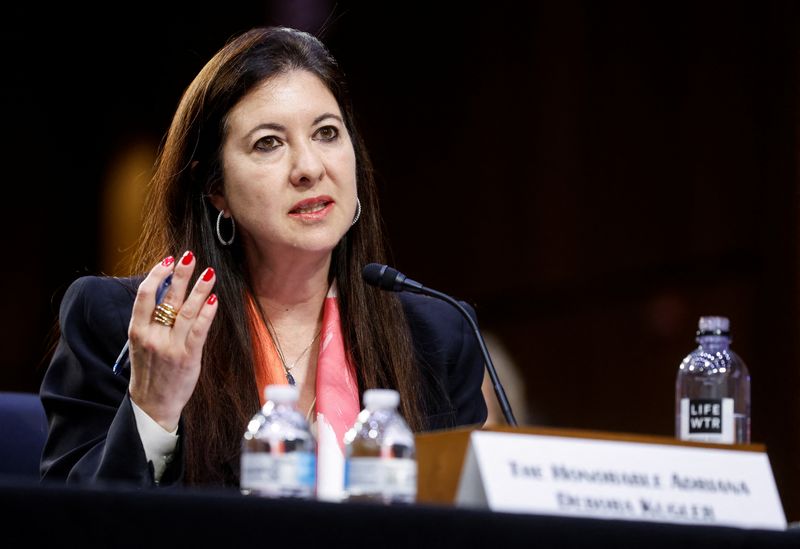Federal Reserve Governor Adriana Kugler on Tuesday expressed cautious optimism that inflation is returning to the U.S. central bank’s 2% target, with goods, services and now housing contributing to easing price pressures.
“We’re seeing more progress on all three categories now,” Kugler said in comments pointing to increased confidence at the Fed that the pandemic-related outbreak of inflation has been contained, a precursor to cutting interest rates. “I’m cautiously optimistic that we’re seeing progress and the type of progress that we need to get back to 2%.”
Though Kugler, who was speaking to a National Association for Business Economics seminar, did not say when she might be ready to cut interest rates, her comments were among the strongest yet from a member of the Fed’s Washington-based Board of Governors suggesting confidence that inflation was on a steady path back to 2% – the precondition the Fed has set for reducing borrowing costs.
Kugler said recent data, including weaker-than-anticipated inflation readings for the last three months, moderating wage growth, and an emerging balance between businesses’ demand for workers and the number of people looking for jobs, point to easing price pressures.
The job market in particular “has seen substantial rebalancing,” with wage growth moderating and measures of demand for workers coming into line with pre-pandemic levels, Kugler said.
“This continued rebalancing suggests that inflation will continue to move down toward our 2% target,” Kugler said. “If economic conditions continue to evolve in this favorable manner with more rapid disinflation, as evidenced in the inflation data of the past three months, and employment softening but remaining resilient, as seen in the past few jobs reports, I anticipate that it will be appropriate to begin easing monetary policy later this year.”
3rd party Ad. Not an offer or recommendation by Investing.com. See disclosure here or remove ads.
Kugler did not specify when rates might fall, but her remarks are consistent with a developing sense that the Fed will lay the groundwork for rate cuts at its July 30-31 policy meeting, and likely start reducing borrowing costs at its Sept. 17-18 gathering. Investors currently put more than a 90% probability on that outcome.
“Despite a few bumps at the beginning of the year, inflation has continued to trend down in all price categories,” Kugler said, with the consumer price index actually falling from May to June.
“Supply and demand are gradually coming into better balance. Supply-side bottlenecks continue to heal and demand has moderated,” she said.
Fed Chair Jerome Powell has also said that recent data has boosted confidence that inflation will decline to the 2% target from its current level about half a percentage point above that mark.
The bulk of Kugler’s remarks dealt with the challenges of economic measurement, particularly during the COVID-19 pandemic, when official government data often lagged developments in the economy and was out of sync with the pace at which Fed policymakers and other officials were making decisions.
Which stock should you buy in your very next trade?
AI computing powers are changing the stock market. Investing.com’s ProPicks are 6 winning stock portfolios chosen by our advanced AI. In 2024 alone, ProPicks’ AI identified 2 stocks that surged over 150%, 4 additional stocks that leaped over 30%, and 3 more that climbed over 25%. Which stock will be the next to soar?



